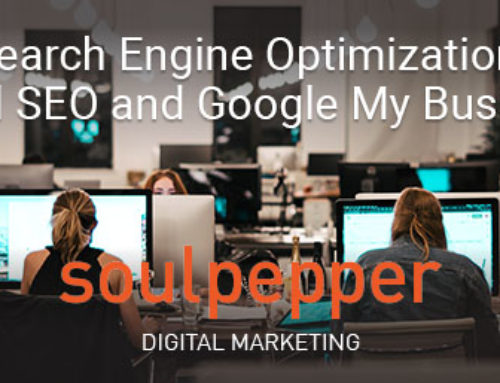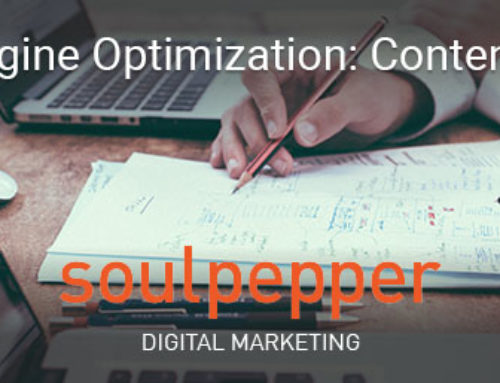Picture this: potential customers are knocking on your virtual door, eager to learn more about what you offer. Sounds like a dream, right? Well, it’s not just wishful thinking. Our Ultimate Guide to Lead Generation for Small Businesses can turn it into your everyday reality. Say goodbye to endless cold calls and hello to a steady stream of interested leads ready to boost your business.
First, you have to understand the basics of lead generation. So, let’s get to it.
Understanding Lead Generation
Lead generation is the backbone of every successful business. It’s all about drawing in and converting potential customers into actual leads.
Think of lead generation as fishing: you’re casting a wide net to catch potential customers interested in what you offer. You’re using different bait—like blog posts, social media updates, emails, SEO tactics, and paid ads—to attract folks. The aim? To reel in their contact details. Once you’ve got them on the hook, you can nurture these leads, turning them into loyal, paying customers down the line. Consequently, it’s all about building a steady stream of interested people who might just become your next best customers. Simple, right?
Decoding Leads
Leads aren’t just random visitors. They’re people that can be interested in your products or services. They are closer to your ideal buyer persona, and you want them to take actions like subscribing to your newsletters or downloading resources, indicating they might become future customers.
Grasping lead generation is like learning to grow business opportunities. Therefore, creating content and offers that click with your audience is the key to success here.
Types of Leads
Leads come in all shapes and sizes, depending on where they are in their buying journey. Understanding these can really boost your lead generation game. So, let’s break it down:
- Information Qualified Leads (IQL): These are the curious cats. They’re just poking around, reading your blogs or eBooks, but they’re not ready for a chat with sales yet. Your job? Educate and nurture them with useful info.
- Marketing Qualified Leads (MQL): These folks are warming up. They’ve taken a deeper dive, maybe downloaded a whitepaper or attended a webinar. Keep them hooked with tailored marketing that speaks to their growing interest.
- Sales Qualified Leads (SQL): These are your hot leads. They’ve shown they’re serious by requesting a demo or a quote. It’s time to pass them to your sales team to seal the deal.
- Product Qualified Leads (PQL): These leads have had a taste of your product through a free trial or freemium model. They’ve seen the value and are ripe for conversion. Hence, marketing and sales should join forces here to turn them into paying customers.
- Service Qualified Leads: These are the ones ready to chat about your services. They often come from customer service interactions or direct inquiries. They know what they want, and it’s time to discuss specifics.
By recognizing these different types of leads, you can craft your approach to meet their needs and guide them through their buying journey more effectively.
Identifying Your Target Audience
Alright, let’s dive into figuring out who your target audience really is. Here are five steps to guide you:
1. Kick Off with Market Research
Start by diving into some market research. Dig up data on your industry, your competitors, and your potential customers. Get your hands dirty with surveys, interviews, and sift through industry reports. You want both the numbers and the stories behind them.
2. Peek at Your Current Customers
Take a good look at who’s already buying from you. Check out their demographics, buying habits, and preferences. Use your CRM and sales data to spot any interesting trends or patterns.
3. Craft Your Customer Personas
Create detailed personas for different customer segments. Think about their age, gender, job, interests, and what keeps them up at night. These personas will help you get a clearer picture of who you’re talking to.
4. Use Analytics Tools
Get cozy with tools like Google Analytics and social media insights. These will show you who’s visiting your site, what they’re doing there, and which channels are bringing in the most traffic.
5. Engage and Spy on Competitors
Chat with your audience on social media and at events to gather feedback and understand their needs. Also, keep an eye on your competitors. See what they’re doing, spot any gaps, and tweak your strategy accordingly.
By following these steps, you’ll get a clear idea of who your target audience is. This way, your marketing efforts will hit the mark. Knowing your customers inside out is key to building strong connections and driving your business forward.
Finding Your Audience
Once you know who your target audience is, pinpointing where they hang out online is next. Be it social media, forums, or industry events, knowing where your audience spends their digital time lets you target them accurately.
Creating a Lead Magnet and Landing Page
Imagine a lead magnet as a shiny bait (like this one!), reeling in potential customers with valuable goodies in exchange for their contact details. Pair it with a sleek landing page, and boom—you’ve got a lead-catching machine.
What’s a Lead Magnet?
A lead magnet is a nifty little incentive you offer to folks in return for their contact info. Think eBooks, whitepapers, free trials, discount codes, or any other tempting tidbit. The goal? Grab your audience’s attention and give them something useful while snagging their details for later marketing.
What’s a Landing Page?
A landing page is a standalone web page crafted just for a marketing campaign. It’s where someone ends up after clicking on a link from an email, ad, or elsewhere. The main mission here is to turn visitors into leads by getting them to fill out a form with their contact info.
How to Build a Landing Page
Creating a killer landing page involves a few key steps:
- Set Your Goal: What’s the main aim of your landing page? Are you collecting email addresses, selling something, or getting people to sign up for a webinar?
- Write a Snappy Headline: Your headline should be clear, concise, and grab attention. Make sure it instantly tells people why they should care about your offer.
- Engage with Content: Give a brief but compelling description of your offer. Focus on the benefits and value for the visitor.
- Include a Strong Call to Action (CTA): Your CTA should be clear and persuasive. Use action words like “Download Now,” “Get Started,” or “Sign Up Today.”
- Design a Simple Form: Keep your form straightforward and only ask for must-have info. Fewer fields mean more people will fill it out.
- Add Eye-Catching Visuals: Use images or videos that support your message and make the page look good.
- Make It Mobile-Friendly: Lots of folks will visit from their phones, so make sure your page works well on mobile devices.
- Test and Tweak: Use A/B testing to try out different headlines, images, CTAs, and other elements. Keep optimizing based on what works best.
Lead magnets and landing pages are vital steps in the lead generation funnel. A lead magnet hooks potential customers with something valuable, and the landing page captures their contact info, turning visitors into leads. This process builds your email list, helping you nurture those leads and guide them through the sales journey, ultimately converting them into paying customers.
By leveraging lead magnets and landing pages effectively, you can boost your lead generation efforts and move potential customers closer to making a purchase.
Using Social Media for Lead Generation
Social media is a treasure trove for connecting with new customers. It’s like fishing in a stocked pond – you just need the right bait. From sparking lively chats to sharing useful tips, using social media smartly can supercharge your lead generation game.
How?
Pick Your Platforms: Go where your audience hangs out the most. Maybe they’re on Facebook, LinkedIn, Instagram, Twitter, or another platform.
Craft Engaging Content: Share stuff that hits home with your audience. Think blog posts, videos, infographics, and live sessions.
Use Social Media Ads: Put some money into targeted ads to cast a wider net. Platforms like Facebook and LinkedIn let you zero in on your ideal audience.
Chat with Your Followers: Reply to comments, jump into discussions, and keep the conversation going. Building relationships can turn followers into leads.
Leverage Lead Forms: Many platforms have built-in forms that make it easy for users to drop their contact info without leaving the site.
With these tactics, social media can become your lead-generating powerhouse, driving more traffic and conversions.
SEO Techniques and PPC (Pay Per Click)
Adding SEO and PPC to your toolkit is like finding a hidden map to treasure. Mastering these can bump up your online presence and pull in quality leads.
SEO Techniques for Lead Generation
Keyword Research: Find and use the keywords your audience is searching for. This boosts your search engine rankings and attracts organic traffic.
Website Optimization: Make sure your site is fast, mobile-friendly, and easy to use. Follow best practices with meta tags, alt text for images, and internal links.
Quality Content: Regularly post top-notch, informative content that speaks to your audience’s interests. This keeps visitors coming back.
Build Backlinks: Get high-quality backlinks from reputable sites to boost your site’s authority and search engine ranking.
PPC Strategies for Lead Generation
Targeted Ads: Use Google Ads and Bing Ads to create campaigns that reach your perfect audience.
Ad Copy and Design: Write compelling ad copy and use eye-catching visuals to draw clicks and conversions.
Landing Page Optimization: Make sure your landing pages are geared for conversions, with clear calls to action and relevant content.
Track and Analyze: Use analytics tools to keep an eye on your PPC campaigns. Tweak your strategies based on the numbers to get better results over time.
By folding SEO and PPC into your lead generation strategy, you can boost your online presence and attract more qualified leads, driving business growth.
Measuring and Tracking Success
To know if your lead generation efforts are paying off, you need to measure and track performance. Therefore, using key metrics and analytical tools helps you make informed decisions and refine your strategies continuously.
Conclusion: Level Up Your Lead Generation
Congrats on making it through this guide! With these insights, you’re ready to attract, engage, and convert leads effectively. Whether it’s honing in on your target audience or perfecting your lead capture tactics, each step gets you closer to your business goals.
Finally, if you need help implementing these strategies or taking your lead generation to the next level, reach out to us. We’re here to help your business thrive!






Leave A Comment